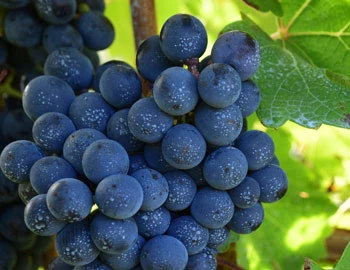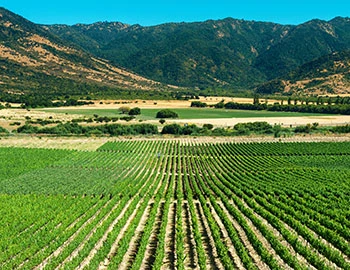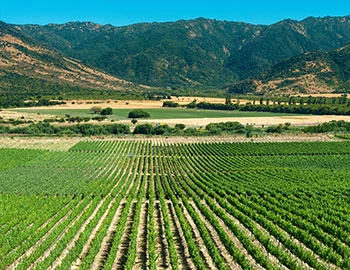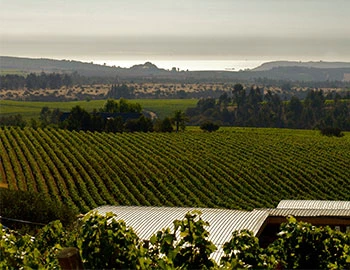Cabernet Sauvignon CIVIS 2022
Colchagua Valley, Terra Noble, 750 ml

| Grape variety: | Cabernet Sauvignon |
| Producer: | Viñedos Terranoble |
| Origin: | Chile / Valle Central / Colchagua |
Description
A Cabernet Sauvignon from the Valle de Colchagua, which reminds in the nose and on the palate of currants, plums and fine dark chocolate. Very balanced structure with fine tannins and a pleasantly soft, fruity finish.
Attributes
| Origin: | Chile / Valle Central / Colchagua |
| Grape variety: | Cabernet Sauvignon |
| Label: | Vegan |
| Ripening potential: | 1 to 5 years |
| Drinking temperature: | 16 to 18 °C |
| Food Pairing: | Cold fish dish, dried meat, Bistecca fiorentina, T-Bone steak, Spaghetti alla bolognese, Spaghetti con sugo al basilico, Cheese board, Spiced grillades |
| Vinification: | fermentation in steel tank, short must fermentation, fermentation at low temperatures |
| Maturation: | in steel tank |
| Volume: | 14.0 % |
| Note: | Contains sulphites |
Cabernet Sauvignon
The backbone of Bordeaux
The Cabernet Sauvignon gives the Bordeaux its backbone, yielding deep violet wines with powerful tannins and endless ripening potential. It is the top dog in Médoc, and is placed in all five premier crus of Bordelais. When young, it often appears strict and unapproachable, but with advancing years, its tannins round off. It is wonderfully velvety, and yet always maintains its freshness. Typical flavours include cassis, graphite and cedar. Wherever Cabernet Sauvignon is found, Merlot is not far away. It complements the robust structure of Cabernet with softness, fruit and richness. The Cabernet Sauvignon is the most-exported vine in the world. It delivers persuasive qualities in Italy as an ingredient of the Super Tuscan, or as the flagship variety from California. There, it is lovingly titled “Cab Sauv”. Meat fans should be aware that it fantastically accompanies a grilled entrecôte. The family tree of Cabernet Sauvignon is surprising: its parents are Cabernet Franc and the white Sauvignon blanc.

Colchagua
Colchagua Valley: a hot spot for top red crus
Some 200 kilometres south of Santiago, Colchagua Valley comprises the southern part of the Rapel Valley, which in turn is a sub-zone of the great Central Valley (Valle Central). In the last 20 years, Colchagua has increasingly issued super-premium wine from red varieties, such as Cabernet Sauvignon, Carménère and Syrah. Many of the newly established vineyards for top wines are located on steep slopes in high-altitude hill zones.

Valle Central
Valle Central: the heart of Chilean viticulture
Valle Central comprises the four most important wine-growing areas in Chile. It starts in the southern outlying districts of the capital, Santiago, and stretches around 400 kilometres to the south, ending at the city of Parral. Red Bordeaux varieties occupy over 70 percent of total vineyard area. Depending on how strongly the particular microclimate is influenced by the cool influence of the Andes or the Pacific, stylistically varied wines result. Specialties like Carménère, Syrah and Carignan are gaining ground.

Chile
Chile – Where fortune came from tragedy
Wine-growing in Chile was born less out of economic reasons than lifestyle. Like the rest of the world, its aristocratic landowners admired everything that came out of France. They imitated French culture, built their haciendas in French architectural styles, and took trips to France. In 1851, the first French vines were brought back and formed the basis for producing quality wines.



